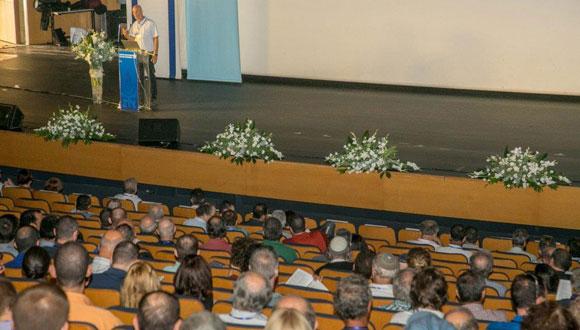Physics Colloquium: Novel functional properties at ferroelectric domain walls: insights from scanning probe microscopy
Patrycja Paruch, DQMP, University of Geneva, Switzerland
Abstract:
In ferroelectric materials, domain walls separate regions with different polarisation orientatio. Fundamentally, they provide an excellent model system of the rich physics of pinned elastic interfaces, whose behaviour is key for controlling domain size and stability in technological applications. In addition, domain walls can present physical properties and a local internal structure quite different from those of the parent phase. The extreme localisation of such properties at these intrinsically nanoscale features makes them potentially useful as active components in future miniaturised electronic devices.
Particularly exciting has been the discovery of domain-wall-specific electrical conduction in many ferroelectric families. Here, I will present our scanned probe microscopy observations of such conduction at 180° domain walls in otherwise insulating Pb(Zr,Ti)O3 (PZT) thin films, highlighting the key role of oxygen vacancies and surface adsorbates, whose distribution can be modulated to reversibly control domain wall transport [1].
In the same ferroelectric samples, we also observe an unusual electromechanical response, forbidden by symmetry in the parent phase but permitted at domain walls as a result of the local symmetry breaking, and the possible emergence of a localised domain-wall-specific polarisation [2]. This enhanced shear response could be technologically important for ferroelectric based surface acoustic wave devices.
Most recently, using nonlinear optical microscopy, we show that indeed there exists a planar polarisation within the domain walls of both PZT and lithium tantalate (LTO), giving rise to pronounced second-harmonic signals. Local polarimetry analysis of these signals, combined with numerical modelling, reveals the presence of Néel-like and Bloch-like configurations in PZT and LTO, respectively, with moreover signatures of domain wall chirality reversal at line defects crossing the LTO crystals [3].
References:
-
Guyonnet et al., Adv. Mat. 23, 5377 (2011); Gaponenko et al., APL 106, 162902 (2015)
-
Guyonnet et al. APL 95, 132902 (2009); Guyonnet et al., JAP 108, 042002 (2010)
-
Cherifi-Hertel et al., Nat. Comm. 8, 15768 (2017)
Event Organizer: Prof. Alexander Palevsky


